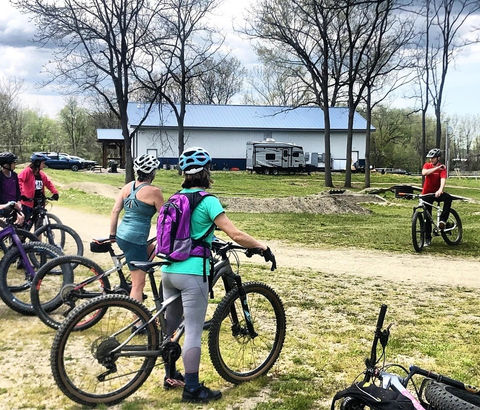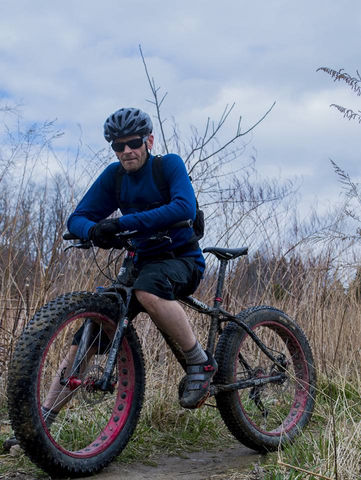
Next Level Mountain Biking
Mountain biking is not just a sport; it's an exhilarating adventure that allows you to connect with nature and push your limits. Whether you're a beginner looking to explore the world of off-road biking or an experienced rider aiming to refine your skills, Kristian can help you Level Up!
Using kindness and science, he patiently instructs and provides expert feedback so you have the tools needed to practice techniques you learn so you can build accurate muscle memory.

Mountain biking skills instruction.
Mastering the Basics: Body Position:
Before you hit the trails, ensure you have a solid foundation in body positioning:
-
Neutral Position: Learn the neutral riding position, which involves standing on the pedals with bent elbows and knees, centered over the bike.
-
Weight Distribution: Understand how to distribute your weight on the bike to maintain balance and control.
Navigating Terrain: Handling and Steering
Mountain biking often involves diverse and challenging terrains. Learn the fundamentals of handling and steering:
-
Cornering Techniques: Master cornering techniques, including the proper way to lean into turns.
-
Climbing and Descending: Improve your uphill and downhill riding skills, adjusting your body position and gear shifting as needed.
Braking and Speed Control:
Control is key to safe mountain biking:
-
Braking Techniques: Understand when to use your front and rear brakes, and practice modulating brake pressure for smooth stops.
-
Speed Control: Learn how to control your speed on descents without losing balance or traction.
Gear Shifting and Cadence
Efficient gear shifting and maintaining a suitable cadence are essential:
-
Gear Selection: Understand how and when to shift gears for various terrains and gradients.
-
Cadence: Learn how to maintain a consistent pedaling rhythm to conserve energy and optimize speed.
Trail Features and Obstacles:
As you progress, you'll encounter trail features and obstacles:
-
Rock Gardens: Develop techniques for navigating rocky sections of trails smoothly and confidently.
-
Drop-offs and Jumps: Understand the principles of launching and landing safely on drop-offs and jumps.
Trail Etiquette and Safety
Responsible riding is part of being a good trail user:
-
Trail Etiquette: Familiarize yourself with trail etiquette, including yielding to other trail users and respecting nature.
-
Safety Gear: Always wear appropriate safety gear, including a helmet, gloves, and protective clothing.
Advanced Techniques and Progression:
As you gain confidence and experience, consider exploring more advanced techniques:
-
Wheelies and Manuals: Learn to lift the front wheel for obstacles or stylish riding.
-
Bunny Hops: Master the art of hopping the bike to clear obstacles.
Practice and Persistence
Improvement in mountain biking, like any skill, comes with practice:
-
Regular Practice: Dedicate time to regular practice sessions on trails of varying difficulty levels.
-
Learn from Others: Join group rides or take lessons from experienced riders or instructors to accelerate your progress.






















